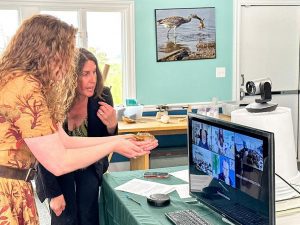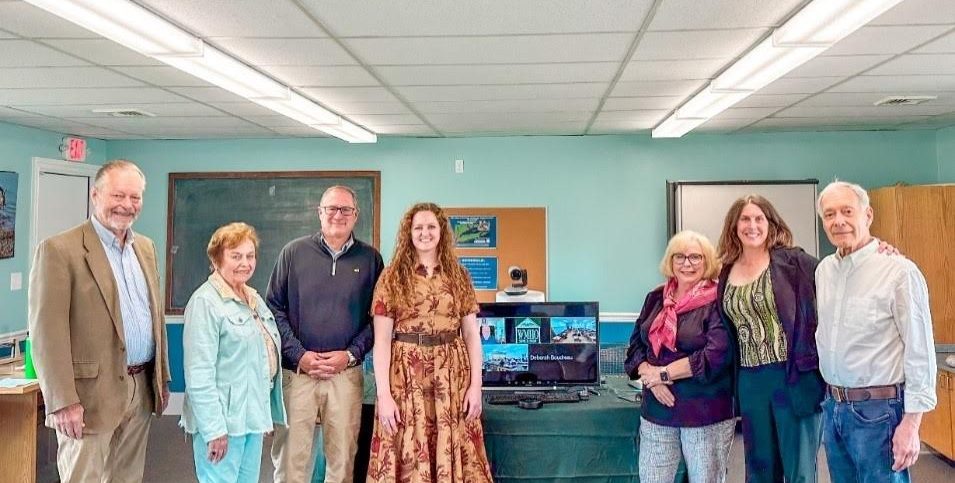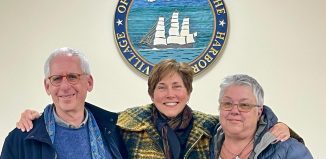The Ward Melville Heritage Organization (WMHO) hosted its third Long Island Sound Connections Summit last week. This virtual, hands-on collaborative learning program connects students across Long Island Sound and allows them to conduct their own research to better understand the water systems in their environment.
Long Island Sound Connections is the first program to connect both shores with students from New York and Connecticut — with virtual class check-ins, “summits” where students present their findings, an ongoing collection of data, and an analysis on that information. The Long Island Sound Connections program was designed to help students learn about the Long Island Sound and to inspire them to become ‘citizen scientists’ and protect their environment. The program is offered via distance learning from the WMHO’s Erwin J. Ernst Marine Conservation Center (EMCC), where students have front row seats to one of the most pristine natural resources in New York State.

WMHO collaborated with Stony Brook University’s Ecology and Evolution Distinguished Professor Jeffrey Levinton, and Dr. Taylor Evans of Stony Brook University’s School of Marine and Atmospheric Sciences to develop a system of data collection parameters for monitoring and analyzing West Meadow Creek’s water quality and species counts.
Professor Levinton and Dr. Evans will continue to support WMHO in developing this multipronged project that seeks to educate the public by providing data representing the creek’s health over time to the public and researchers. They will also assist participating classes to in continuing to learn about the Long Island Sound environment on an ongoing basis.
The third “summit” of classes in this program was between Ms. Michelle Miller and Ms. Doreen Barry’s 6th grade Science class from Selden Middle School and Ms. Jess Castoro’s 6th grade Science class from Achievement First Bridgeport Academy Middle School, who worked in collaboration with Mill River Wetland Committee.
The 2023 “summit” participants have been researching the Sound for six months, and with assistance from professionals in the field, have learned the environmental impact of industrialization, recent achievements on mitigating the effects, and how to utilize their data in the future by monitoring the Sound.
Each class created specialized newscasts to showcase their findings on the relationships between water quality, animal and plant species, and even with human impact. In this cross sectional study of the Sound, students compared and contrasted their two environments (suburban and urban) and presented it to their partner class.
In addition, the study is longitudinal and seeks to track changes over time. Data will be added into the WMHOs software to create a data map and timeline to assist environmental researchers of all ages to understand and appreciate similarities and differences across the Long Island Sound.
With grants provided by the Fullwood Foundation, the Frey Family Foundation and Webster Bank, this program was offered to participating classes free of charge. All costs associated with the program were sponsored by these organizations.
For more information about the WMHO, on the Long Island Sound Connection program, other historic, environmental and scientific programs that the WMHO offers, please call 631-751-2244 or visit wmho.org.







